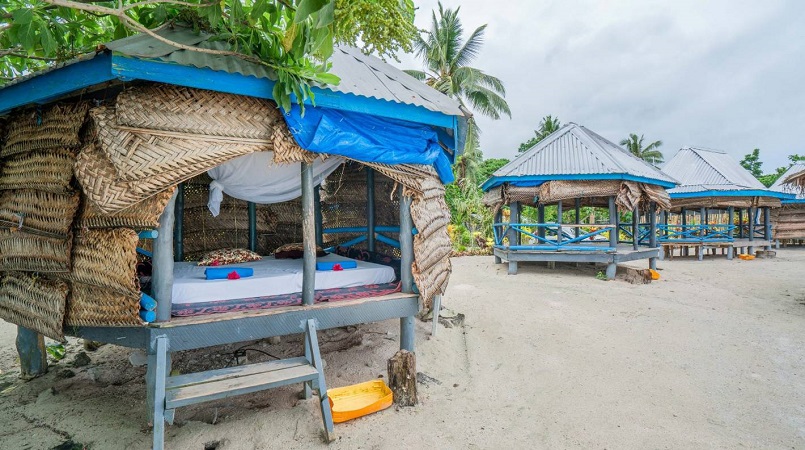
There’s nothing quite like the sweetly smoky smell of food slowly roasting in a Samoan umu.
We’re watching tufuga (tattoo artists) use sharp bone combs to inscribe two stoic-looking men with notoriously painful traditional pe’a tattoos when my nostrils first catch a whiff of the scent drifting across the lawn.
Despite having stuffed myself with hunks of fresh coconut flesh and lolly-sweet pawpaw and pineapple at the hotel breakfast buffet, I feel my taste buds begin to salivate. When you’re in Samoa, I am finding, it is pretty much impossible not to overeat.
The umu is similar to the Māori hāngī in that it is an outdoor oven but, unlike the hāngi, the umu is prepared above the ground.
Earlier that morning we’d watched lavalava-clad men peel taro, breadfruit and green bananas and mix taro leaves, coconut cream and onions in small bowls made of yet more taro leaves before placing them on a pile of fire-heated volcanic stones and covering them with banana leaves to slowly cook. It is the men, we are told, who traditionally preside over Samoan kitchens.
The Samoa Cultural Village in Apia is one of the best places to enjoy an umu, which are still regularly prepared by many Samoan families today.
Unlike cultural centres which only offer demonstrations, the activities you see here are the real deal. The tufuga in the tattoo hut come from a long line of tattoo artists specialising in the highly detailed waist-to-knee pe’a, which symbolises a man’s connection to his community.
Their customers really are being inked, even if their calm expressions suggest otherwise, and the food served to guests at the conclusion of their visits is the same food one would enjoy at an umu in a local village, although sometimes fish, meat and faiai eleni (canned fish with coconut cream and onions) are added to the mix.
When it’s finally time to eat, we head back to the umu where the chefs hand us lunch boxes piled high with the lightly charred fruits of their labours. Mild in taste on their own, the breadfruit, taro and green bananas are transformed when they’re teamed with the sweetly rich palusami (taro leaves drenched in onion-spiked coconut cream).
Ultra-filling and ultra-decadent, it should sustain me for the rest of the day. But my insatiable appetite for oka (a ceviche-style raw fish dish) sees me down a big bowl of fresh tuna, cucumber, tomatoes and coconut cream at the nearby Nourish Cafe about half an hour later.
